Swimming can take up a lot of energy, but you need to make sure you don’t hurt yourself. If you’re looking to workout outside of the pool, consider doing yoga. You can do it almost anywhere, and there are some benefits you can enjoy when you do hit the pool.
Yoga for swimmers can help with flexibility, awareness, and strength. It can also help with quick recovery from swimming and can provide mental health benefits. Excellent poses to try before or after swimming include the cat-cow stretch, downward-facing dog, and the triangle pose.
If you want to get better at swimming and feel fit, you shouldn’t just exercise in the water. Yoga can provide a lot of benefits for swimmers, and some great poses can help. Keep reading to learn more about how yoga can help swimmers.
Benefits of Yoga for Swimmers
Yoga can provide many benefits for swimmers. Whether you swim competitively or for fun, you can use yoga to warm up your muscles before getting in the water. Yoga can also help you after you get out of the water and on rest days.
As long as you keep up with yoga and practice your form, you can enjoy many benefits. Then, you can feel more loose and free next time you jump into the pool.
Here are a few benefits of yoga that are especially good for swimmers.
Flexibility
Yoga encourages you to move your body in different ways, which can help with your flexibility. When you first do yoga, you may need to push your body a bit to maintain the proper form of a yoga pose. You can keep pushing yourself out of your comfort zone the more you practice yoga.
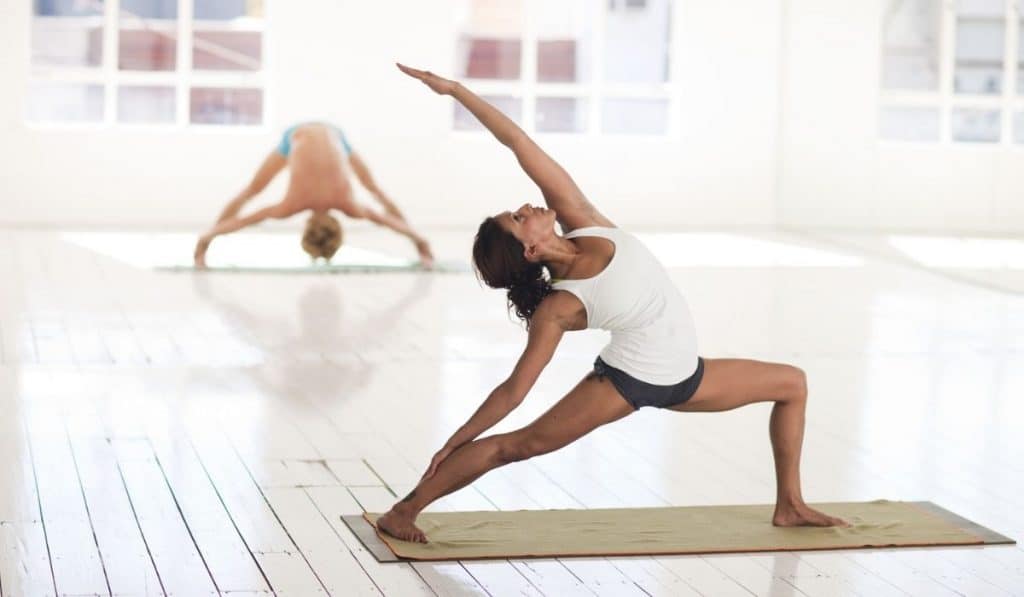
After a while, you will gain some flexibility throughout your arms and legs. Being able to move your arms and legs can help you swim faster, and it may help your form in the water. You won’t have to worry about overstretching a muscle just to do a backstroke, for example.
It may take a while before you see a big change. But if you keep up with yoga, you will get to be more flexible. Then, you won’t have to work your muscles as much when you swim.
Stability
Along with flexibility, yoga can help you gain stability. Being stable in water is essential for staying on track while you swim. It will help keep your joints more stable so that you won’t overextend any of your joints.
Yoga can help your core be more stable, and that can help with both future yoga sessions and swims. If your core isn’t very stable, it can be hard for your arms and legs to do what you want. The more you work on stability, the better mobility you will have in the water.
If you can choose yoga poses that help with flexibility and stability, you can see some great results. Then, you can incorporate yoga into your regular workout routine.
Strength
Yoga can also make you stronger. When you practice yoga, you may have to hold a particular pose for a certain length of time. As you hold that pose, you can strengthen the muscles involved. You’ll increase your muscle endurance, which can come in handy for long-range swimming.
Doing yoga can help strengthen your arms, legs, and core. It can help increase your stamina for your different muscle groups, and it can work your entire body in one session. You won’t have to worry about lifting weights and doing crunches and something else.
Your muscles may not grow significantly, but you may notice a slight difference. Either way, you can feel stronger, and that can make it easier to propel yourself through the water. As you keep getting stronger in yoga, you can translate that to your swimming.
Breath Work
When you swim, you need to plan your breathing so that you don’t lose air. That means knowing when you can breathe and when to take a larger breath to account for more time underwater. In yoga, you can focus on your breathing to help with this.
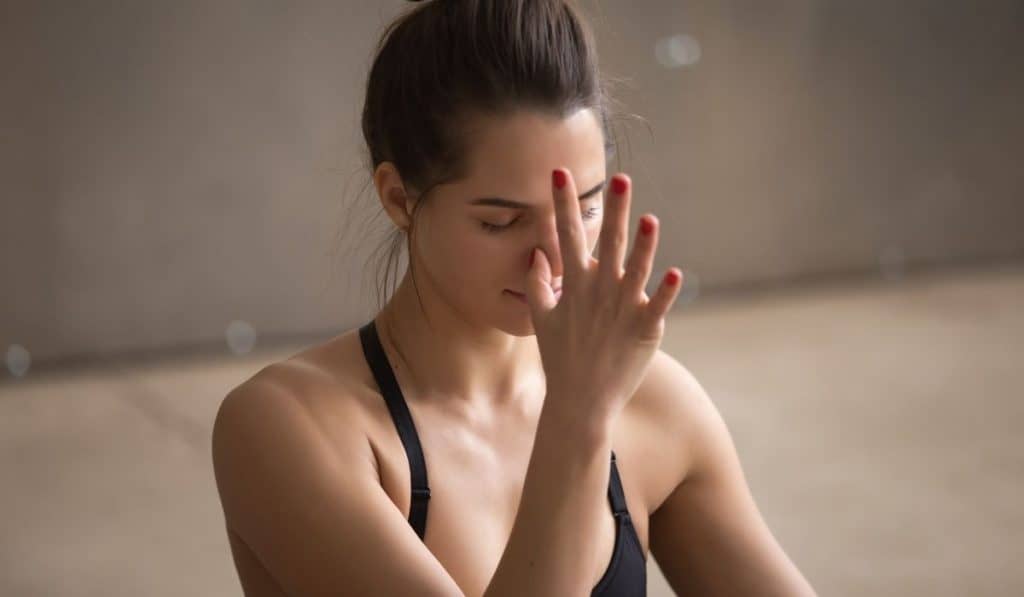
You can spend a yoga session working on intentional breathing, and you can tell yourself when to breathe in or out. If you work with a yoga instructor, they can give you specific breathing exercises. Then, you can teach yourself how to hold your breath and how to take a bigger breath.
As you learn more about breathing during yoga, you can improve your breathing while swimming. Then, you won’t have to worry as much about when and how to breathe in the pool.
Awareness
In any sport, you need to be aware of your body to maintain good form and avoid injuries. Yoga teaches you to focus on your body and to know what your body is doing and how it’s feeling. In swimming, you need to know all of this to make sure you can swim efficiently.
If you have a hard time maintaining your body awareness, you should practice yoga. You can use it as an excuse to block out everything else to focus on you and your body. Then, you can make sure you do all of the poses correctly.
When you hit the pool again, you can use those same skills to be aware of your body. Knowing what your arms and legs are doing can help you adjust your stroke. Yoga can be a great tool for improving your awareness, even if you already pay attention to your body.
Mental Health
As an athlete, you probably face a lot of stress outside of swimming. You may have school or a job, or both. Perhaps you have a family to take care of or errands to run. All of that can make it easy to feel stressed, and that stress can affect your swimming.
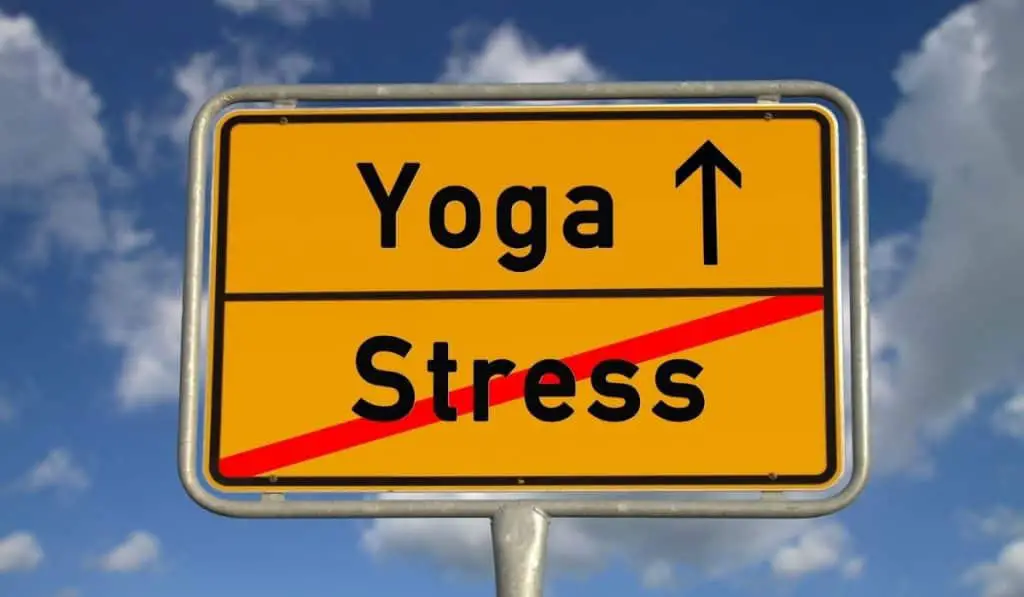
But yoga can help you forget about those things and manage your stress. Yoga can be relaxing, and you can ignore your responsibilities for that session. Even after you finish, you can feel calmer and ready to take on your busy schedule.
If you can maintain that calmness while swimming, you may do better. You won’t worry about what you have to do later that day. Instead, you can focus on swimming.
Injury Prevention
Swimming can put a lot of physical stress on your body, and you may suffer an injury. Even if you have good form, you may not be able to avoid getting hurt. While yoga won’t guarantee that you won’t have an injury, it can help.
The strength and flexibility you gain from yoga can help when it comes to injury prevention. You’ll know how to move your arms and legs. You’ll have a better form from the yoga poses you do.
All of that can culminate when you go swimming. Those individual things will help make you a better swimmer. But they can work together to help you keep from getting hurt in or around the water.
Recovery
Yoga can also help you recover after you go swimming. It can help reduce physical and mental stress, and that can help your body bounce back from the day. Doing yoga can help you get better sleep and feel less tense.
Yoga also activates the parasympathetic nervous system, which affects your eyes, stomach, and blood vessels. When you activate that system, you can move better, and you can feel good.
All of this can help you, and your muscles recover from swimming. So if you do happen to get injured, your injury may not be as bad as if you didn’t practice yoga.
Yoga Poses for Swimmers
Once you understand how yoga can benefit you and your swimming, you should choose the right poses. You can work with a yoga instructor, and you can find someone who specializes in teaching swimmers and athletes.
But you can also learn yoga at home, and you can rotate between a few poses. That way, you can work different muscle groups and increase your flexibility and strength throughout your body.
Here are some excellent yoga poses to try to help your swimming.
Cat-Cow Stretch
The cat-cow stretch is a pose that flexes your back muscles. You start by getting on your hands and knees. You’ll start in the cow position, so you will extend your head and neck up while letting your stomach lower a bit. For this pose, you also need to move your feet so that they rest on your toes.

You can then move to the cat pose by raising your back and lowering your head and neck. You should also let your feet lay parallel on the fronts of your feet. The cat pose is usually more comfortable for swimmers.
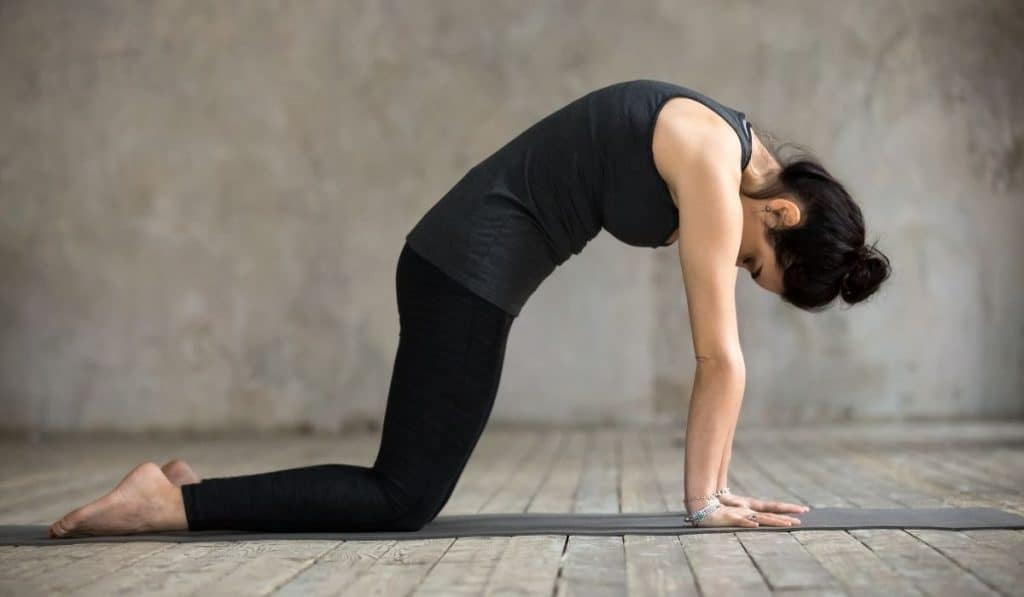
But you should spend equal time in both the cat and cow poses. That way, you can stretch out your back and neck.
Downward-Facing Dog
The Downward-Facing Dog is another excellent yoga pose, and you will put your hands and feet on the ground. Place your hands far enough forward but not too far because you need your legs to extend up.

You should aim to keep your hands and feet flat on the floor, but it’s okay if your heels don’t quite reach. This pose can work for all muscle groups throughout your body, so it’s a great one for swimmers.
If you want to make this pose more dynamic, you can bring one knee forward at a time and make a pedaling motion. At the same time, stretch the opposite heel so that it touches the floor and rotate between your legs.
Triangle Pose
You can move from the downward-facing dog to the triangle pose pretty easily. Start by bringing your right foot forward to meet your hands. You can then raise your left hand to the sky and rotate your torso so that it is over your right shin.

You can hold this pose for a few seconds, and you can switch so that you stretch the other side. So that means moving your right leg back and your left leg forward. Then, you can switch your torso so that your right arm extends up and your left arm touches the ground.
The triangle pose is a great way to work your arms and legs. It requires a lot of balance to maintain the pose, so start doing it in short bursts. Then, you can increase the time as you get used to it.
High Lunge
For this pose, start by standing near the back of your yoga mat. Bring your right leg forward so that your right thigh is parallel to the ground. The left leg should be straight, and your toes should hit the floor.
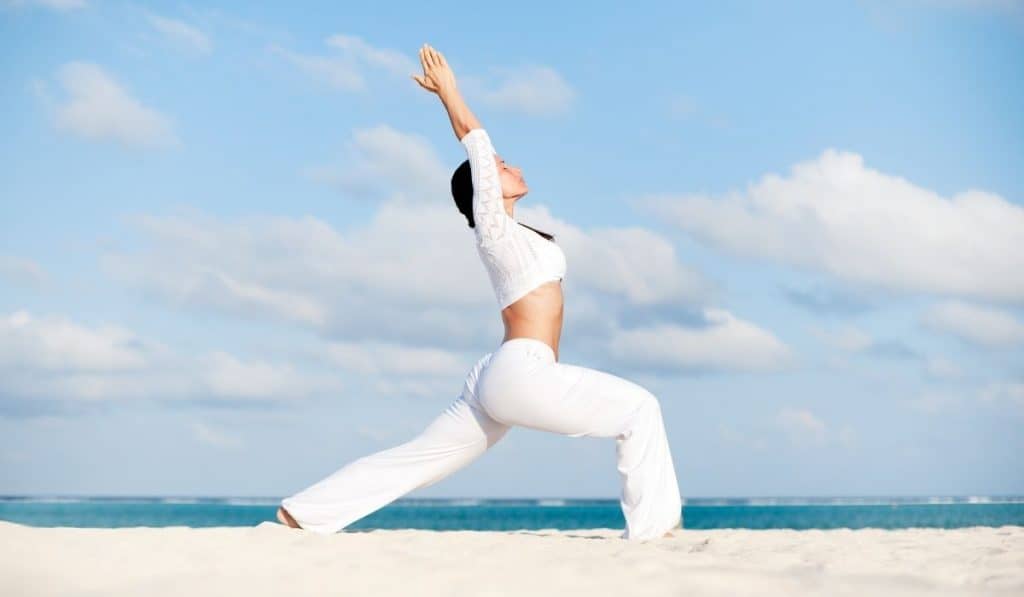
You should do this while breathing in, and that can help your breathing for your next time swimming. Next, raise your arms over your head and keep them straight. Make sure your shoulders stay in their sockets and that your shoulder blades stay on your back.
The high lunge position is another one that you can alternate between sides. Once you hold the position, you can return to the start and repeat but with your left leg forward.
Locust Pose
If you want to focus on building core strength, try the locust pose. Start this pose by lying flat on your stomach with your hands at your sides. As you breathe in, lift your head, shoulders, and arms. Breathe three times, then lower your body to the ground.
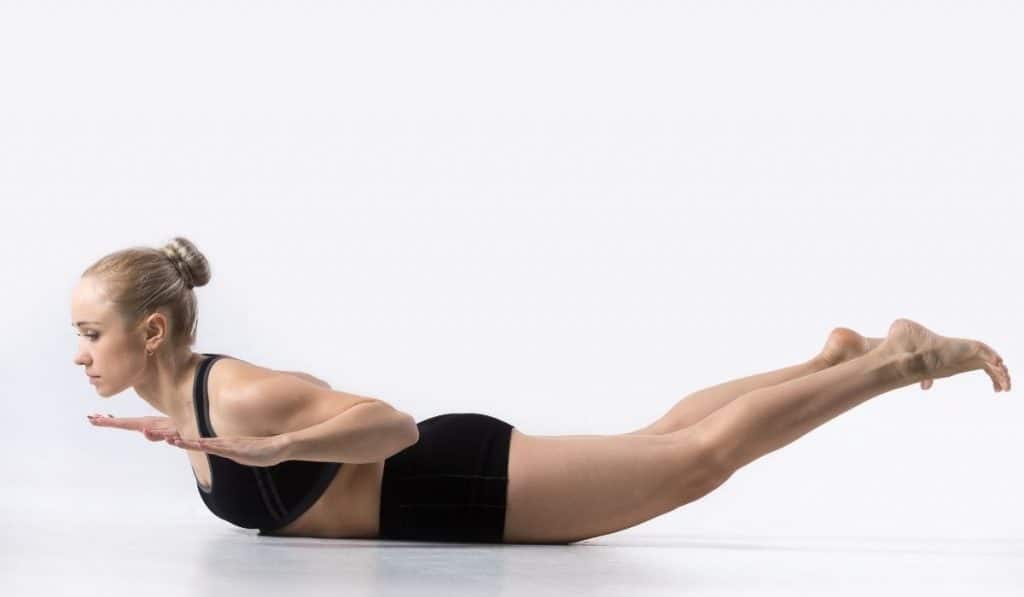
You can do this pose again, but this time, include your legs and feet when you raise up. Breathe in and raise everything but your core. You can use this pose to practice your breaststroke, and you can do three breaststroke motions before you lower your body back down.
When you first do the locust pose, you don’t have to practice a stroke. But it can be a great exercise if you can’t get to the pool very often. You can strengthen your arms and keep them in good shape between trips to the pool.
Supine Twist
For the supine twist, lay down on the floor and extend your arms out to each side. Bring your right knee into your chest and extend your left leg out. Then, use your hips to bring your right leg over your left leg. Keep both shoulders on the ground, and breathe in and out five times before returning to the start.
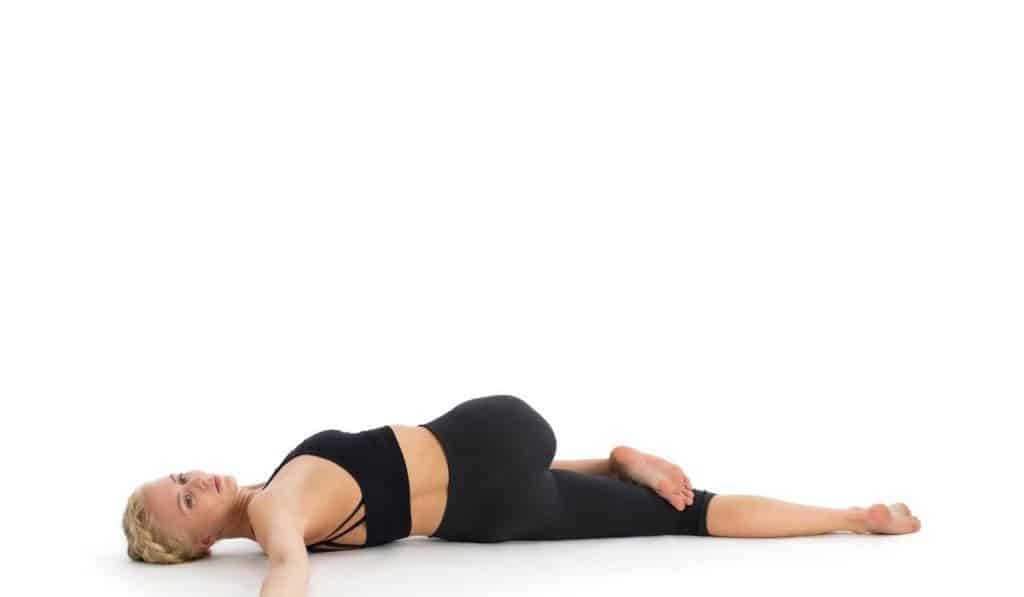
Then, you can do the same steps with the other side. Bring your left knee up and keep your right leg out. Use your hip to bring your left leg over to the right. Then, breathe a few times before relaxing.
Bridge Pose
For the bridge pose, lay on your back. Bend your knees and move your feet closer to your bottom. Keep your feet from bending as you move them. Next, roll your shoulder blades under your torso so that they are like a shelf.
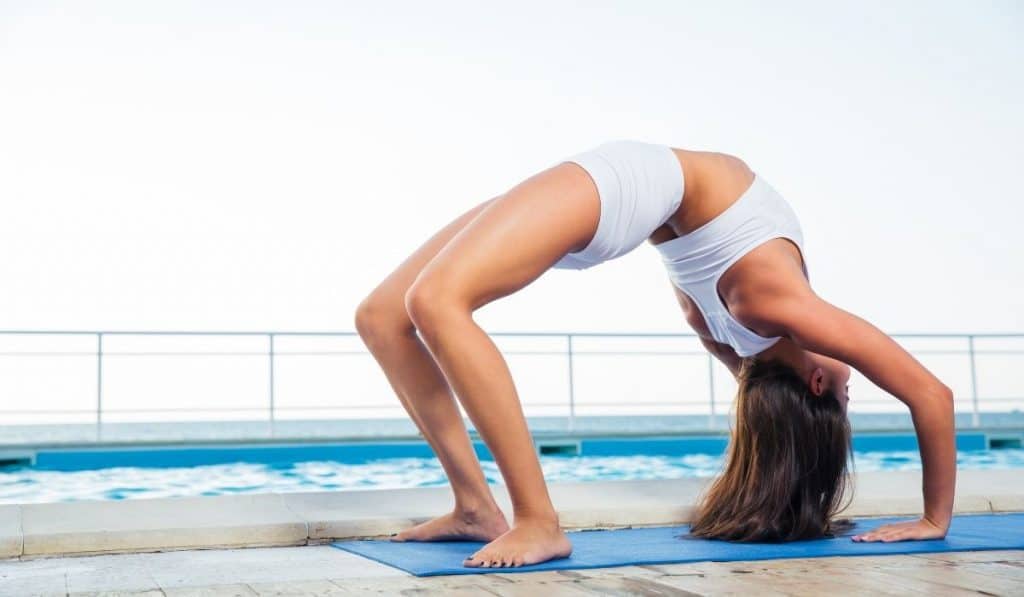
Breathe in and raise your hips so that they lay on an angle between your knees and shoulders. Avoid moving your chin and neck. But you can move your hands in and lock them together under your back.
Stay up for three breaths, then lower yourself down. You don’t have to do the pose on a second side, but you can repeat the overall pose and motion two more times. That way, you can practice that move and strengthen your core.
Cobbler’s Pose
If you want a position to do while sitting, try the cobbler’s pose. Start with your legs out forward and bring them close to you by bending your knees out to each side. Hold your feet so that the soles of your feet touch each other.
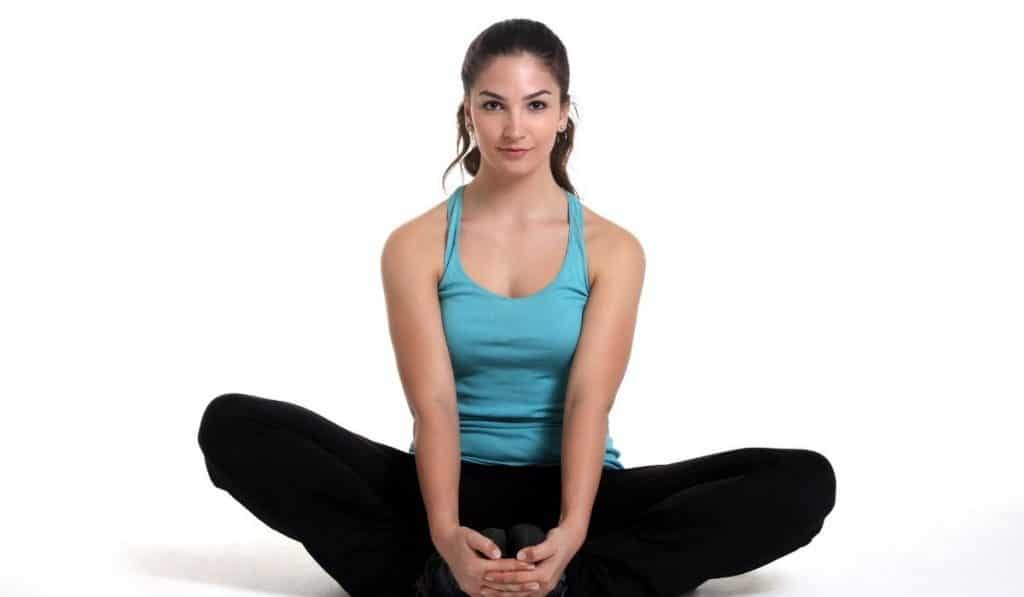
Maintain the pose for at least five breaths. You can start with your feet slightly away from you, and you can bring them closer each time you do this pose. That way, you can work on improving your flexibility while targeting your breathing.
Shoulder Stretch
If you want to take things a step further with yoga, try the shoulder stretch position. You may want to do yoga a few times before attempting this because it is a bit more complicated. But this is a good choice if you want more of a challenge.
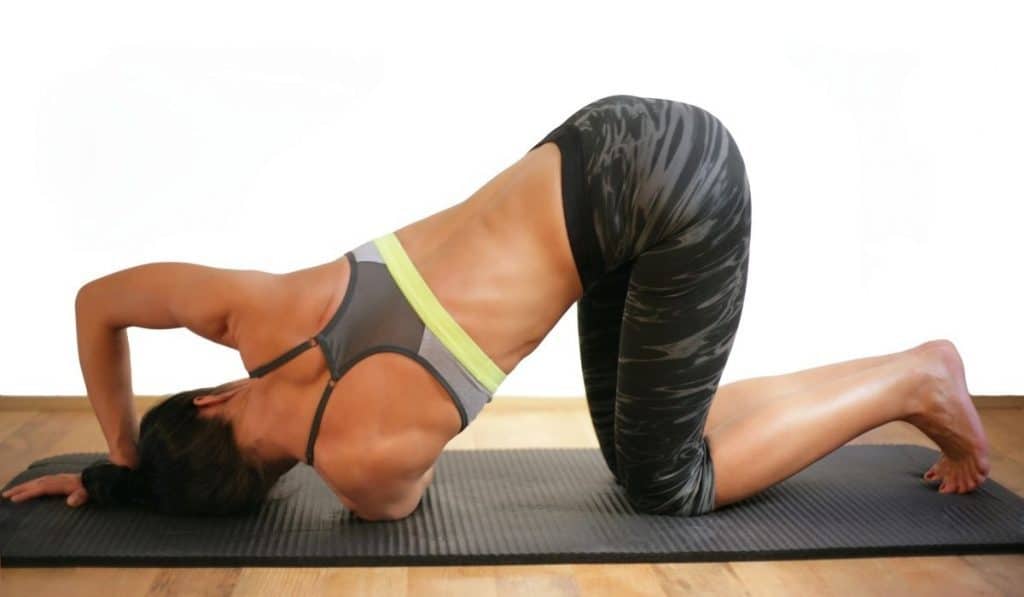
Start with your hands and knees on the ground. Breathe in and bring your right arm up. As you breathe out, bring your right arm down and under your left armpit so that your right shoulder touches the ground. Try to breathe in about five times before you go back to the starting position.
Then, you can start again but with your left arm. Hold the pose for a few breaths.
Corpse Pose
The Corpse Pose is a great option for ending your yoga session. All you need to do is lay on your back with your arms and legs out but relaxed. Focus on relaxing and not holding any tension in this pose.

Stay in the pose for a few minutes, and stay still as best as you can. Then, you can finish your yoga session and move on to swimming or another activity.
Final Thoughts
Yoga can be an excellent addition to anyone’s routine, but it’s especially useful for swimmers. You can use it to relax but also to build flexibility and muscle strength. Give these poses a try next time you want to do some yoga.
Sources
- Your Swim Book: 5 Reasons Yoga Will Make You a Better Swimmer
- Yoga for Swimmers: Seven Benefits of a Swimming-Specific Yoga Practice
- Yoga Bhoga: The Importance of Breathing In Yoga
- Healthline: The Parasympathetic Nervous System Explained
- Very Well Fit: 14 Yoga Poses for Swimmers
Sitasyoga.com is a participant in the Amazon Services LLC Associates Program, an affiliate advertising program designed to provide a means for sites to earn advertising fees by advertising and linking to Amazon.com. We also participate in other affiliate programs which compensate us for referring traffic.





